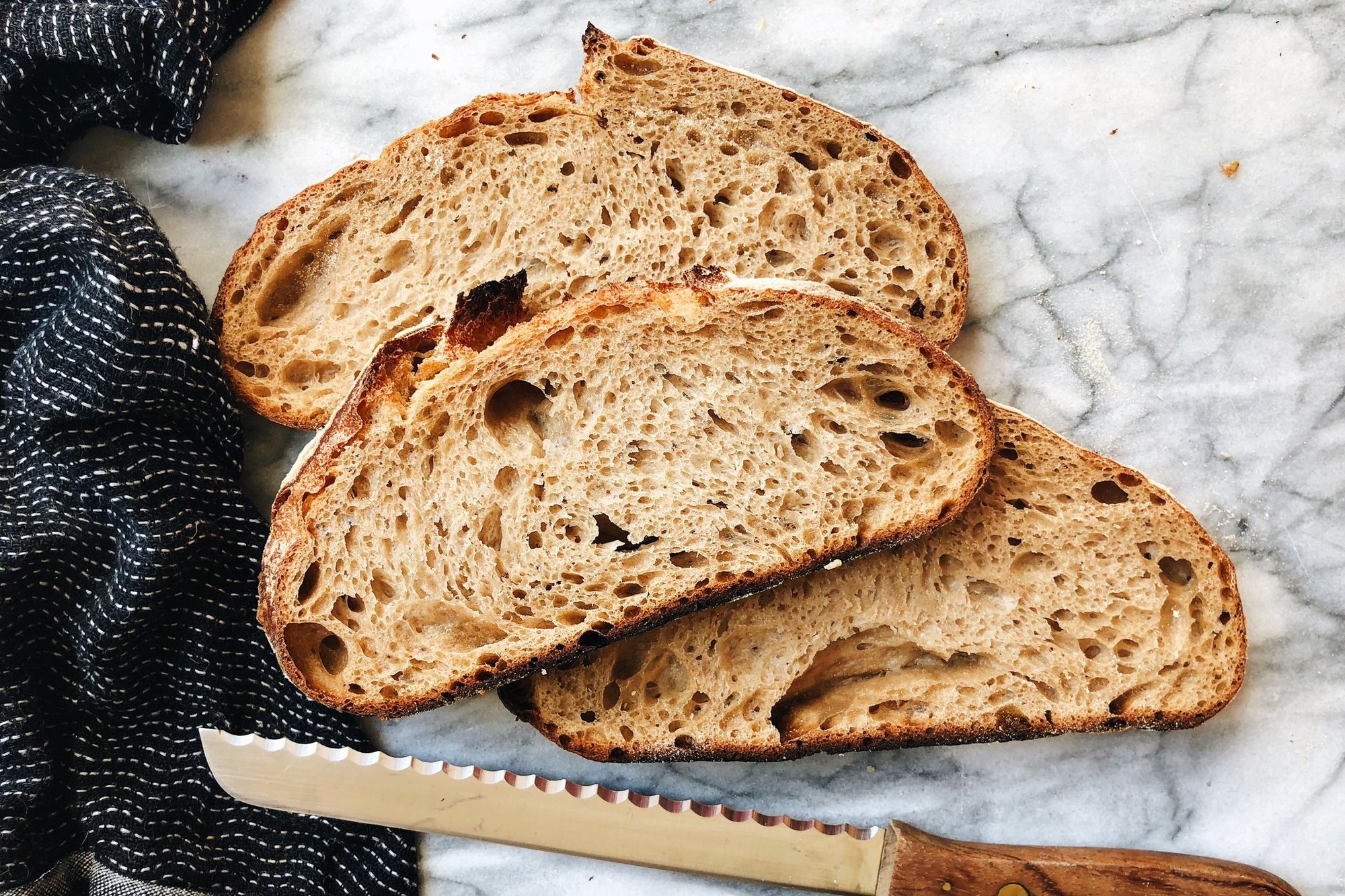Baking sourdough bread can be intimidating for many beginners, to say the least. We asked our baker Alessandra to break down the basics to the first step in succeeding at sourdough: maintaining a thriving sourdough starter.
If you've ever been the proud recipient of a sourdough starter sample at our pop-up shops, you'll know it isn't always the easiest thing to do (many of you write to us to tell us yours has not survived).
Here we illustrate two methods for starter maintenance, the Countertop Method and the Fridge Method.
Countertop Method
To maintain a thriving sourdough starter, it helps to create a routine. It is best to feed your starter daily, around the same time every day (ie. morning or night). For this method, keep your starter on the counter at room temperature.
Use a 1:1:1 ratio of flour to water to the starter. That is equal parts starter, water, and fresh flour.
We recommend these quantities
40 grams Flourist Sifted Red Spring Wheat Flour
40 grams 78-80 degree (Farenheit) water (body temperature if you do not have a thermometer)
40 grams starter (discard the rest, yes you read that right!)
It is super handy to have a kitchen scale for this, but if you don't, simply eyeball, and mix with a clean spoon until you have a very thick batter. Each new feeding requires that you discard the starter that is over your 40 grams needed to keep the feeding schedule on track. This can be the most difficult hurdle for many new bakers, and is also why a smaller amount of flour daily is best to use for maintenance!
Fridge Method
You can also keep your starter in the fridge if you cannot commit to feeding it once daily. This is a great way to participate in the sourdough baking process without the daily commitment! If you will be keeping in the fridge, we recommend to feed it once every week or so. Follow the instructions above for quantities, leaving it on the counter to allow it to rise and fall while it 'feeds', before returning it to the fridge. This makes it easier for the starter to bounce back once you take it out for a bake. Take it out two to three days before you plan to bake and feed it twice a day until you are ready to bake.
Baking Sourdough Bread
The night before you plan to bake, feed your sourdough starter twice: the night before and then the morning of your planned bake.
Since we recommend using a smaller amount for maintenance, the night and morning feeding that you plan to bake on, increase the amounts to 75 grams of each, so you have enough to bake with and have some leftovers.



Comments
Please include the units for the temperature of the water; I assume that is Fahrenheit. Please also include celsius temperatures. This is primarily a Canadian website, after all. Thank you.
This is awesome! I have some recipes on my blog for using up the discarded starter. It reacts in quick reads with the baking soda since it is so acidic and adds nice flavours to muffins and that kind of thing.
Http://www.aforagershome.com/recipes
Hi Monica! Our wheat berries should be cooked on the stove top for at least one hour. We too have not had any success with slow cooking them. We usually boil them in plenty of hot water for at least an hour! Adding a tsp of cider vinegar can help to soften them so they cook quicker!
As for the starter, we offer it as a free gift with purchase at our monthly pop-up shops! We would love to see you there!
Thank you Maureen!
Thank you Maureen!
I don’t know how to get the ‘starter’! How can I maintain if I don’t have that? How do I make that?
On an unrelated topic, I recently tried to make the wheatberries but I’m unsuccessful. Should I be using a slow cooker? Please tell me how to prepare them. I tried to prep them as I would a slow cook quinoa, with no success!
My reluctance to discard most of that precious starter that I’d been feeding led to my worst failures when I first tried to bake with it. Luckily, there are some recipes that can use up some of that discarded starter for those of us who hate to create food waste: https://www.culturesforhealth.com/learn/category/sourdough-recipes/#discarded_starter